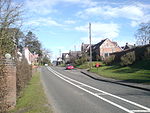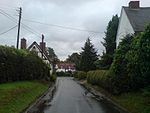Ardencote Manor

Ardencote Manor is a hotel and former manor house located 0.5 miles (0.8 km) north of the village of Claverdon, Warwickshire, England. The manor was originally built in 1863 as a dowry house for Mary Phillips, the daughter of a Manchester based wool merchant Thomas. The property passed through several owners until it was purchased in 1980 by a consortium with the idea of turning it into a hotel and country club. After several defaulted attempts the current owner, a Mr Huckerby, took it over in 1996 and finally got the project off the ground.At present the hotel has conference rooms, spa facilities, a swimming pool, tennis courts and an 18-hole golf course.
Excerpt from the Wikipedia article Ardencote Manor (License: CC BY-SA 3.0, Authors, Images).Ardencote Manor
Lye Green Road, Stratford-on-Avon Claverdon CP
Geographical coordinates (GPS) Address Phone number External links Nearby Places Show on map
Geographical coordinates (GPS)
| Latitude | Longitude |
|---|---|
| N 52.28807 ° | E -1.70773 ° |
Address
Ardencote Manor Hotel
Lye Green Road
CV35 8LT Stratford-on-Avon, Claverdon CP
England, United Kingdom
Open on Google Maps








